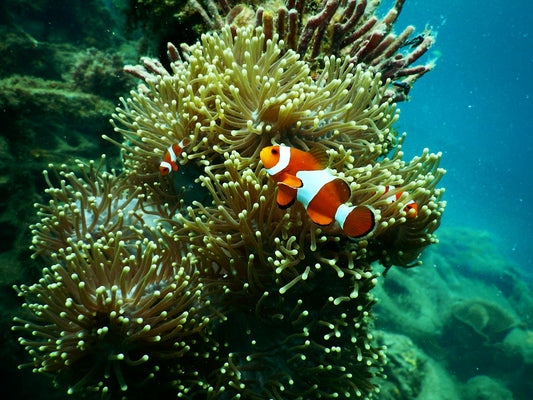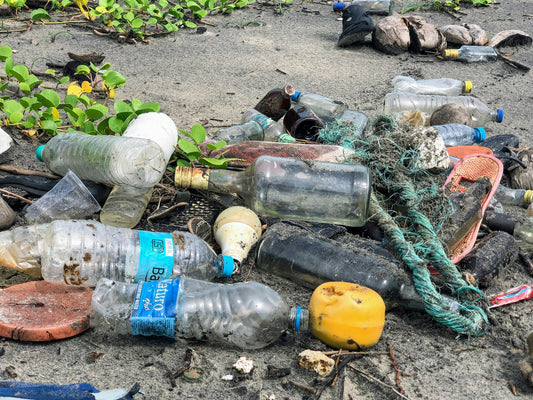Share
Plastic pollution is a major environmental concern around the world, and fast-moving consumer goods companies are at the heart of the issue. Coca-Cola is widely highlighted in this issue because its plastic packaging is so large and is used around the globe.
With more attention from regulators, environmental groups, and consumers, the packaging used by Coca-Cola raises important questions about the company’s environmentally responsible actions, new ideas, and the difference between promises and actual results.
Coca-Cola’s Current Plastic Usage
Most of Coca-Cola’s global operations rely on plastic packaging, and polyethylene terephthalate (PET) bottles are the main way the company delivers its beverages. According to Oceana, a non-profit ocean conservation organization. Coca-Cola’s annual plastic packaging use rose from 2.96 million metric tons (6.53 billion pounds) in 2018 to approximately 3.45 million metric tons (7.61 billion pounds) in 2023. This indicates a steady upward trend in plastic usage.
Most of the packaging is designed for just one use, mainly in the soft drink, water, and juice categories. Much of the plastic packaging comes from PET bottles, and the rest is made from high-density polyethylene (HDPE) used for caps and closures. Many markets in North America, Latin America, and Southeast Asia continue to see Coca-Cola use lightweight, disposable plastics for their packaging.
Coca-Cola’s plastic bottles are used in more than 200 countries, and the biggest markets are the United States, Mexico, India, Brazil, and China. While some regional innovations, like refillable PET bottles and tethered caps have been introduced, they make up only a small amount of the company’s total sales.
The present level of plastic use provides the basis for future predictions and explains the size of Coca-Cola’s global packaging impact using its current approach. If this upward trend continues without major operational or material shifts, Coca-Cola is projected to generate over 9.1 billion pounds of plastic waste annually by 2030.
Coca-Cola is one of the major contributors to global plastic waste production. Read this article to analyze the role of Coca-Cola in global plastic pollution.
Environmental Consequences of Continued Plastic Production
Packaging is the largest contributor to the carbon footprint of Coca-Cola’s products, accounting for 30–70% of the total footprint, depending on the type of container. Polyethylene terephthalate (PET) is not biodegradable and breaks apart into microplastics, which remain in nature for a very long time and can enter the food chain. Many of these materials end up in rivers and oceans, where they are known to threaten marine animals by being eaten or caught in them.
In places where there is no proper waste management, bottles are commonly burned or left in open areas, which pollute the soil, the air, and cause drainage problems in the city. People living close to these waste sites are at higher risk of health problems because of contact with toxic gases and polluted water.
Plastic production is responsible for significant climate issues as well as local pollution. Minderoo Foundation’s 2023 study reports that cradle-to-grave greenhouse gas (GHG) emissions from single-use plastics in 2021 were about 450 million metric tons of CO₂ equivalent. This is more than the total annual GHG emissions of the United Kingdom.
A rise in plastic from Coca-Cola will put even more pressure on the environment and waste management systems that are already struggling.
Coca-Cola’s Sustainability Commitment
Coca-Cola has publicly committed to a range of sustainability goals under its World Without Waste initiative, which includes targets to make all packaging 100% recyclable by 2025, use 50% recycled content in plastic bottles by 2030, and collect and recycle the equivalent of every bottle sold globally.
Coca-Cola very largely achieves that 100% recyclable packaging goal, but independent assessments suggest a gap between these commitments and on-the-ground progress regarding recycled PET. Even though the company wants to increase recycled PET use, recycled plastic in its packaging is still limited by short supplies, different regulations, and technical problems in some regions.
While Coca-Cola reports incremental increases in recycled PET use in certain markets, global adoption remains uneven. As of the latest reports from 2023–2024, the average recycled PET content in Coca-Cola’s plastic bottles globally is approximately 17%. This indicates that the company is well behind achieving its target of using 50% recycled content in its packaging.
Considering the current situation, Coca-Cola is secretly curbing its reusable packaging target to aim for 35% to 40% recycled material in its primary packaging (plastic, glass, and aluminum) by 2035, including increasing recycled plastic use to 30% to 35% globally.
These commitments and results somehow indicate that most of the sustainability claims from Coca-Cola are nothing more than just greenwashing.
Possible Mitigation Scenarios
Coca-Cola is making some efforts to cut down on plastic by investing in recycled materials, running pilot reuse programs, and joining efforts to improve waste management. They have set a target to collect all the plastic bottles by 2030 in their world without plastic vision. Even so, the amount of plastic used is still increasing.
Major changes are needed to prevent the amount of waste from reaching 9.1 billion pounds by 2030. In places where refill infrastructure is already set up, expanding returnable bottle systems is a highly effective way to reduce plastic use. The use of recycled PET is very important, but its growth is still limited due to challenges with supply and regulations.
Although using biodegradable or compostable packaging can help reduce waste, it is not likely to become the main solution because its infrastructure is not widely available.
If businesses partner with governments and implement EPR, they could change packaging on a large scale. Making meaningful progress requires moving from a linear to a circular packaging system, which values reusing, recycling, and using resources efficiently in every market.
For consumers, supporting greener packaging and choosing more sustainable products is a direct way to contribute to environmental care and long-term sustainability.
We hope you enjoyed this article. Please feel free to leave a comment below if you want to engage in the discussion.
If you want to read more like this, make sure to check out our Blog and follow us on Instagram. If you are interested in truly sustainable products, check out our Shop.








